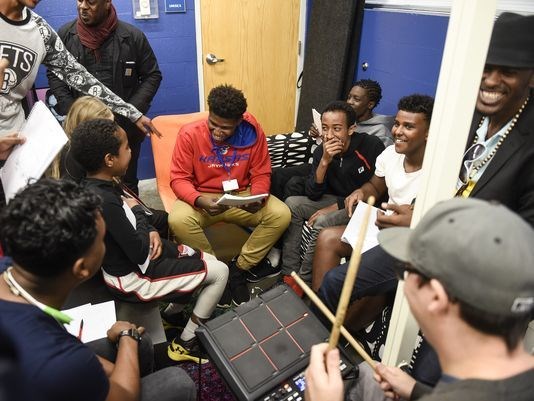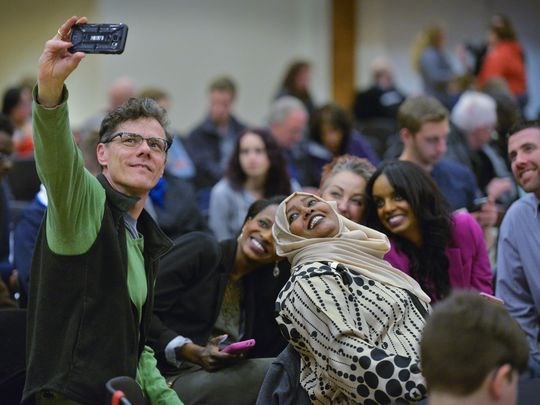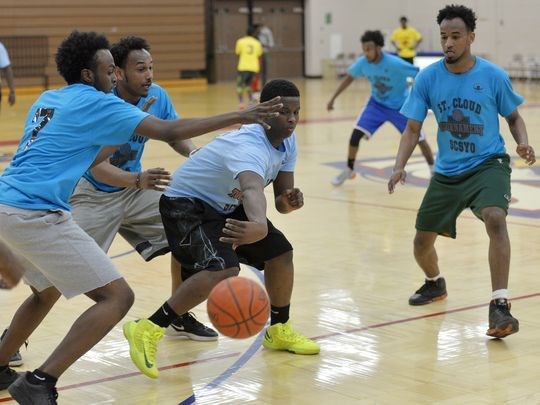
Monday October 23, 2017
Nearly 74,000 people in Minnesota speak Somali, according to new estimates released by the U.S. Census Bureau.
For the first time, the bureau separated out some African languages, including Somali, which had previously been counted in one category.
This estimate is on the higher end of previous estimates of Somali people in Minnesota.
In early 2016, the Minnesota Demographers Office gave an estimate that there are between 40,200 and 52,400 Somalis in Minnesota. That includes people born in Somalia and of Somalia descent. Some from the Somali community put the number as high as 80,000 Somalis living in Minnesota.
The number provides a slightly clearer picture of the population in the state, said Susan Brower, Minnesota's state demographer.
"We're getting closer than we were before," she said. "But we're still not completely there."
Why is this population so hard to count?
Historically, immigrant populations have been hard to count and were often undercounted because of language and other barriers.
Groups often have to muddle together numbers from other sources or go off of rough estimates.
People can track the number of primary refugees through the organizations that resettle them here. Primary refugees come directly from another country. It's more difficult to track secondary refugees, who arrived elsewhere and moved to the area by choice.
Simply counting foreign-born residents leaves out the children who have at least one Somali parent and claim Somali ancestry.
Ancestry isn't the best measure for a few reasons. Some people may identify more with an ethnic group than a country, some don't know what the word means, and some don't know how to answer.
"For a lot of people, the question goes unanswered or is very, very vague, like African," she said.
Birthplace can leave out Somali people who were born in refugee camps in Kenya, or in the United States after their family moved out of Africa.
"People are much more comfortable saying what language they speak at home," she said.
Language spoken at home is probably the best way we have to estimate populations, Brower said.
"Language is nice because it captures pretty well the cultural community ... people have in their heads when they're thinking of Somali or Oromo populations in a way that birthplace doesn't necessarily," Brower said.
This number still misses out on some of the population because there is a cutoff for very young children and some other issues.
The category also includes "other Afro-Asiatic languages" so it may include people who do not claim Somali ancestry.
Why are accurate counts important?
In some ways, it's simple: "People want to understand how their communities are changing," Brower said.
It is also a way to better allocate government, nonprofit and private resources, such as translation and interpreting services.
"The Census data shows us not only who speaks a particular language, but how well they speak English," she said.
It should get better with the 2020 Census, she added. A category that has typically been tied to race or nationality will have more detail, allowing people to be more precise in their answers.
"That will go a long way to help solidify some of these numbers because we'll have a complete count, rather than a sample," she said.
How does the Somali-speaking population compare to other groups?
After Spanish, Somali is the next most common language spoken at home. More than 203,000 Minnesotans speak Spanish. Hmong has nearly 59,000 people.
About half of the Somalis in the survey — about 37,000 people — said they speak English very well. That ratio is similar to people who speak Chinese languages, including Mandarin and Cantonese.
About 42 percent of Vietnamese-speaking people say they speak English less than "very well." About 54 percent of people who speak Arabic said the same.
Other African languages
The data also offered numbers on Oromo, Tigrinya, Yoruba, Igbo and other African languages.
Oromo and Tigrinya are also spoken near the Horn of Africa, near Somalia, and the groups are sometimes lumped together. Oromo is spoken in Ethiopia and refers to an ethnic group of the same name. Tigrinya is spoken in northern Ethiopia and Eritrea.
Yoruba is spoken in west African, primarily Nigeria and Benin. Igbo is spoken by an ethnic group of the same name, who live in southeast Nigeria. Nearly 10,000 Minnesotans speak one of these languages.
Historical patterns
The history of immigration in Minnesota can be seen in the numbers.
The state has a higher number of Hmong refugees, who came in the 1970s, when war displaced them from Laos.
Germans came to Minnesota in the 19th century, and by the 1880s, Germans, Swedes and Norwegians dominated the state's population. Estimates say nearly 18,000 people still speak German.
A wave of Russian immigration came to Minnesota in the 1990s, following the collapse of the Soviet Union. Nearly 14,000 Minnesotans speak Russian.
There are nearly 25,000 people who speak Vietnamese. Minnesota saw a wave of Vietnamese refugees arrive in the 1970s during the Vietnam War, after the fall of Saigon.Only about 4,600 people speak native languages of North America, less than one-tenth of 1 percent of the state's population. People who identify as American Indian or Alaska native alone are about 1.3 percent of the state population.
Nearly 25,000 people speak a Chinese language, including Mandarin or Cantonese.
Nearly 13,000 people speak Swahili or other languages of central, eastern and southern Africa. About 9,000 people speak Hindi. Nearly 10,000 people speak Arabic.



